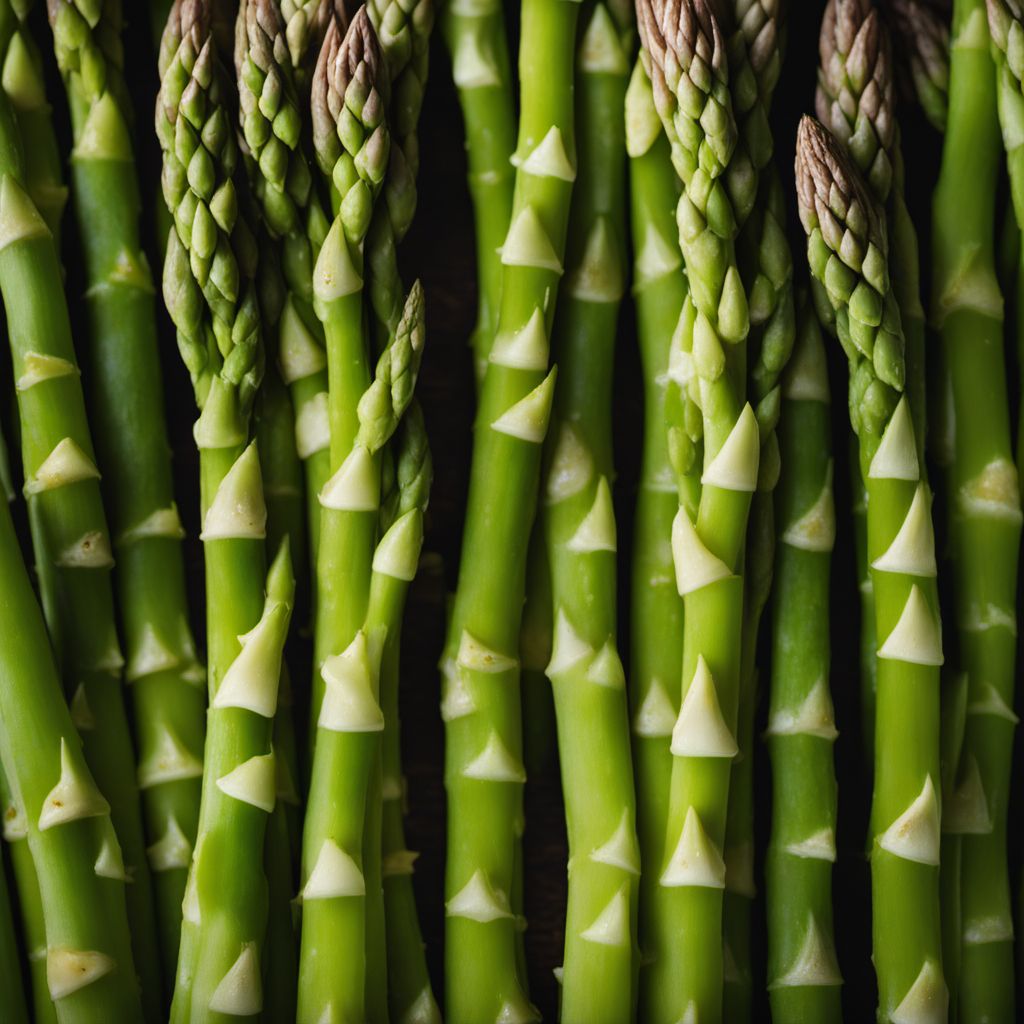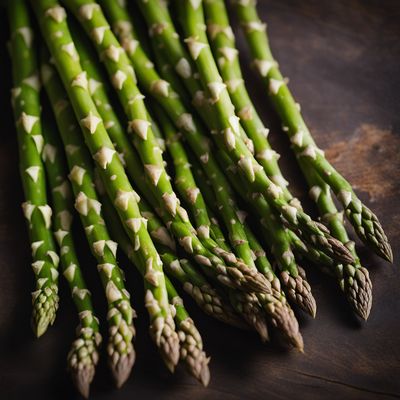
Ingredient
Asparagus and similar-
The Versatile Spear
Asparagus and similar vegetables, such as green beans and artichokes, are characterized by their slender, elongated shape and vibrant green color. They have a unique combination of earthy and slightly bitter flavors, with a tender yet crisp texture. These vegetables are often enjoyed steamed, roasted, or grilled, and they add a refreshing crunch to salads and stir-fries.
Origins and history
Asparagus has a rich history dating back to ancient Egypt, where it was cultivated for its medicinal properties. It later gained popularity in Roman and Greek cuisines, and it is now widely cultivated in various regions around the world. Asparagus is celebrated for its cultural significance in countries like France and Germany, where it is a cherished springtime delicacy.
Nutritional information
Asparagus is low in calories and a good source of vitamins A, C, and K. It also contains folate, fiber, and antioxidants, which contribute to overall health and well-being.
Allergens
Asparagus may cause allergic reactions in individuals who are sensitive to certain proteins present in the vegetable. Symptoms may include itching, swelling, or difficulty breathing.
How to select
When selecting asparagus, look for firm, straight spears with tightly closed tips. Avoid any signs of wilting or discoloration. The spears should have a vibrant green color and a slight sheen. Additionally, choose asparagus with uniform thickness for even cooking.
Storage recommendations
To maintain freshness, store asparagus in the refrigerator. Trim the ends and place the spears upright in a container with about an inch of water. Cover loosely with a plastic bag to retain moisture. Use within a few days for the best flavor and texture.
How to produce
Asparagus can be grown in a home garden by planting crowns or seeds in well-drained soil and providing ample sunlight and water. It requires patience, as it takes a few years for the plants to establish and produce a bountiful harvest.
Preparation tips
To prepare asparagus, snap off the tough ends by bending the spear until it naturally breaks. Alternatively, use a knife to trim the woody ends. Asparagus can be steamed, roasted, grilled, or sautéed. It pairs well with lemon, garlic, butter, and Parmesan cheese. For a quick and healthy side dish, toss asparagus with olive oil, salt, and pepper, and roast in the oven until tender and slightly caramelized.
Substitutions
Green beans can be used as a substitute for asparagus in many recipes, offering a similar texture and mild flavor. However, they may require slightly longer cooking times. N/A
Culinary uses
Asparagus is commonly used in salads, pasta dishes, risottos, and stir-fries. It can also be enjoyed on its own as a simple side dish or incorporated into quiches and frittatas. Its delicate flavor pairs well with a variety of ingredients, including citrus, herbs, and cheeses.
Availability
Asparagus is widely available in North America, Europe, and Asia. It is commonly cultivated in countries such as the United States, Mexico, Peru, Germany, France, and China.

